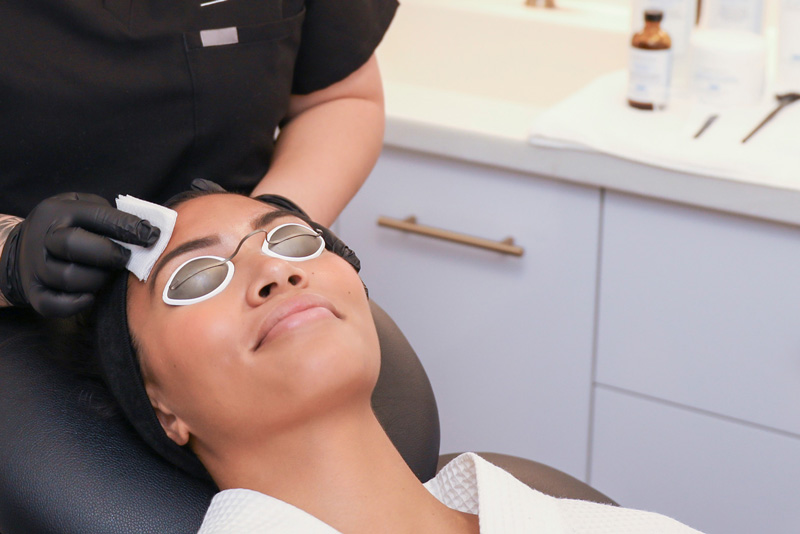It’s Peel Season
Fall & Winter Months are one of the best times of year to refresh and renew your skin with a chemical peel. After months of sun exposure, many people notice more discoloration, rough texture, or fine lines. Chemical peels use controlled acids such as glycolic, lactic, salicylic, or trichloroacetic acid (TCA) to gently dissolve the bonds between dead skin cells, allowing them to shed and stimulating healthier cell turnover. Resulting in older damaged skin cells shedding off leaving behind a smoother, more even skin tone.

The Benefits of Chemical Peels
Backed by decades of clinical use, peels can:
- Brighten skin by removing dull, damaged layers
- Improve texture and smooth rough patches
- Minimize the appearance of pores
- Address discoloration, sun damage, and uneven skin tone
- Soften the look of fine lines and early aging
Why Cooler Weather is Ideal
With lower UV levels and less intense sun exposure, cooler weather creates a safer environment for skin to heal post-peel. Newly revealed skin is especially sun-sensitive, so this time of year reduces the risk of complications and makes it easier to maintain results. Plus, it’s the perfect season to prepare your skin for upcoming events and holiday gatherings, with results that make skin look naturally radiant.
What to Expect
Most chemical peels take less than 30 minutes and are well-tolerated. During treatment, you may feel a mild tingling or warmth as the peel works. Downtime varies depending on the strength of the peel and how well your skin has been prepped: some patients experience little to no visible peeling, while others may shed thin flakes or larger pieces of skin over several days. Either way, the skin is renewing itself beneath the surface, with noticeable improvements often visible within a week.
Chemical peels are highly customizable, making cooler weather the perfect time to reset, restore, and reveal healthier, more luminous skin.
